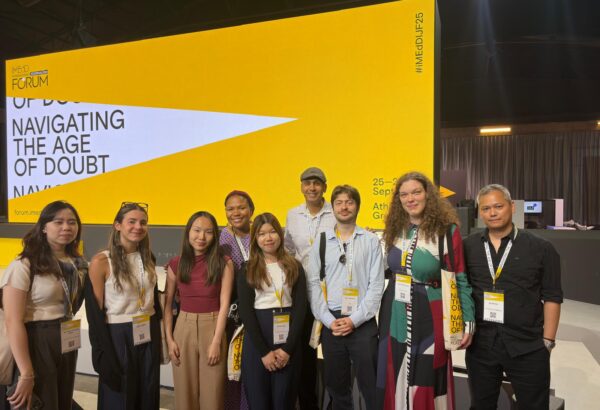“People hearing without listening,” is an all too common experience addressed in our first and last ground rules:
Ground Rule 1:
Listen, it’s as important as talking.
&
Ground Rule 9:
Last rule, same as the first: Listen (A tip: before speaking, take a pause).
We all want to be listened to; we want the other person to go beyond “hearing” our words to truly “listening” to what we are saying.
The Difference Between Hearing and Listening
Listening implies absorbing what we say/what they hear, digesting it and understanding us. In fact, some argue that really listening to another person is the best gift we can give.
For most people – those without hearing challenges – hearing comes naturally.
Indeed, it can take significant effort not to hear what’s going on around us. all the noise around us, as well as the “noise” of our own internal dialogues, can present challenges to really listening.
For example, we might be distracted by something going on in the room or on TV, or we might be wrapped up in our own thoughts about events (past, present or future). Or we might have stopped listening because we have already decided how we are going to respond, to what you are saying (or to what, based on our distracted, imperfect listening we think you mean).
How to Listen More Effectively
The poet and philosopher Mark Nepo suggests that to listen, to really listen, is:
to lean in softly with a willingness to be changed by what we hear.
Many students who have participated in our Can We Talk? dialogues have told us that this quote was one of their most powerful takeaways from the experience.
Let’s tease out several key pieces of wisdom embedded in this definition of listening.
First, “lean in softly” is both literal and metaphorical. The literal meaning implies we listen best – and most signal our willingness to listen – when we incline toward the other person. No sitting back with arms crossed in front of us (which can suggest defensiveness) or leaning back with their hands clasped behind their heads (which can suggest rejection of or disinterest in what the other person is saying).
Metaphorically, lean in softly suggests genuine interest in what the other is saying and openness to learning from what is being said and meant. “Softly” recognizes that every conversation has emotional content that is as important as its intellectual content; it suggests a conscious attempt at patience and empathy, a reining in of our tendencies to snap judgment and anger.
Second, “a willingness to be changed by what we hear” again implies a brave openness, that we are willing take in what the other says and consider it seriously.
We can’t uphold that promise if, almost as soon as a person starts talking, we assume we know where they’re headed and begin formulating a response in our heads i.e., stop actually listening.
Very few of us talk in perfect topic sentences and crisp syllogisms. We think out loud; we take winding paths to our point; we take side trips into anecdote; we figure out what we meant to say in the process of saying something, then correcting and revising it in our heads and trying again.
And to be “changed by what we hear” … ah, that’s one of most challenging, scariest parts of Nepo’s advice. Did you feel yourself bristle a bit, mentally duck behind your defenses, when you read that part?
It’s important to note we, and Nepo, are not talking about major “change.” Rather, the “willingness to be changed by what we hear” might just be a willingness to think or say things like:
- “I hadn’t thought of that before.”
- “I hadn’t thought about it quite that way.”
- “Ah, now I understand what you mean, why that’s important to you and why you think that’s reasonable.” [1]
None of these responses suggest you’ve dropped any of your core values or positions. It just means you’ve gained some new understanding of another’s values or positions.
Here’s a truth not much discussed: Listening is a skill, a discipline and a disposition that do not come naturally to human beings.
Listening in the way that Nepo recommends is a skill that can be learned, but only with some effort, and it must be honed by regular practice. We need to be intentional about remembering to use the skill, because we all backslide from time to time. This is true even for alleged experts in civic dialogue, as we can testify from sad experience.
The good news is that it’s a skill we all can get better at.
Key Elements of Skilled Listening
As the Nepo quote suggests, this type of listening involves several key elements, each of which we can get better at with practice and willpower:
- Using our bodies – our eyes, our posture, our hands, our heads – to signal to the other person our eagerness to listen. This physical preparation also improves our capacity to listen with real attention.
- Concentrating on what is being said, filtering out distractions and restraining snap judgments.
- Waiting until the other person is finished before we draw a conclusion, ask questions, or formulate a response.
- Summarizing our understanding of what was said to the other person, to make sure we got it right – and to make them feel truly heard, which research shows is key to other person being willing to genuinely listen to you in return.
Final Tip for Good Listening
The extra advice in the final version of the ground rule – to pause before you speak – can be particularly powerful. Remember that your emotional experience of what someone else says is at least as powerful as the intellectual grist you take in. Those emotions create physical responses, rushes of hormones etc., in your body.
Taking our emotional temperature has three parts: (a) what am I feeling: angry? sad? confused? insulted? Etc. (b) where am I feeling it: a tightness in my chest? Heart beating fast? Stomach twisting? Etc. and (c) at what level (where, on a scale of 1 to 10, with 10 highest and 1 lowest.[2]
While doing that inventory we can take one or two or three slow breaths to center ourselves and then respond in a way that builds, rather than damages, the chances of a constructive exchange.
Giving yourself a moment to think in quiet about what you’ve just heard, letting your emotions subside, enables you to consider and perhaps reconsider what you might say. It also helps the other person let their emotions settle a bit, perhaps making them more able to listen to what you have to say in reply.
THINK before you speak
So many conversations go awry because one or both parties opens their mouths swiftly, to speak without thinking. So, in the pause, take a breath and think through this acronym: T.H.I.N.K.:
T – is it True?
H – is it Helpful?
I – is it Inspiring?
N – is it Necessary?
K – is it Kind?
If you answer “no” to any of these questions, then it’s probably wise to remain silent or to reframe what you had intended to say.
If it seems wise to speak, then consciously select your words with intention, care, and perhaps (if you’re having a really good day) wisdom.
This post is from a series of 6 principles and 9 ground rules for constructive dialogue developed and written by Chris Satullo and Harris Sokoloff for the SNF Paideia course: “Civil Dialogue Seminar: Civic Engagement in a Divided Nation”.
9 Ground Rules for Participating in Constructive Dialogue:
- Ground Rule 1 and 9: Listen, it’s as important as talking.
- Ground Rule 2: Everyone participates; no one dominates
- Ground Rule 3 and 4: Disagreement is fine. It’s fruitful. Don’t try to win it or paper it over. Explore it.
- Ground Rule 5: Build on what others say
- Ground Rule 6: Consider the possibility that, on any given issue, your information may be incomplete
- Ground Rule 7: Notice what voices are not in the room. Consider fairly what they might say if they were
- Ground Rule 8: Be honest, but never mean
6 Principles for Designing Constructive Dialogue:
- Principle 1: Design talk to lead to action
- Principle 2: A brave space
- Principle 3: If you want to hear a different conversation, you have to hold a different conversation
- Principle 4: Redefine the win
- Principle 5: Listen in the way you would like to be heard
- Principle 6: Begin with story not position
[1] indeed, if both people listen this way, we might each walk away from the conversation thinking “that person’s not evil (or stupid, or ???) after all” thereby reducing polarization
[2] With thanks to Howard Stevenson and his work with the Racial Empowerment Collaborative and Lion’s Story.




